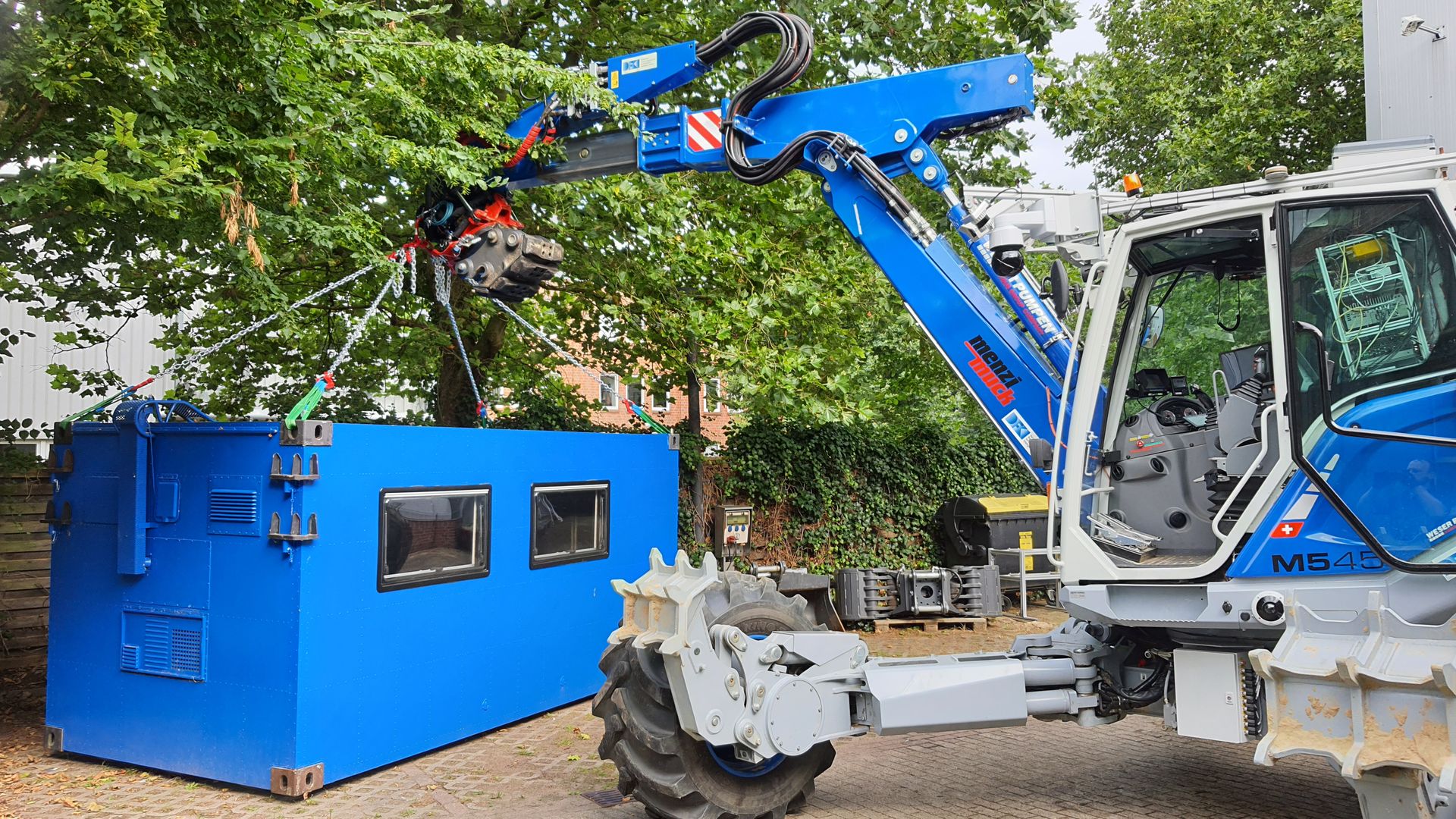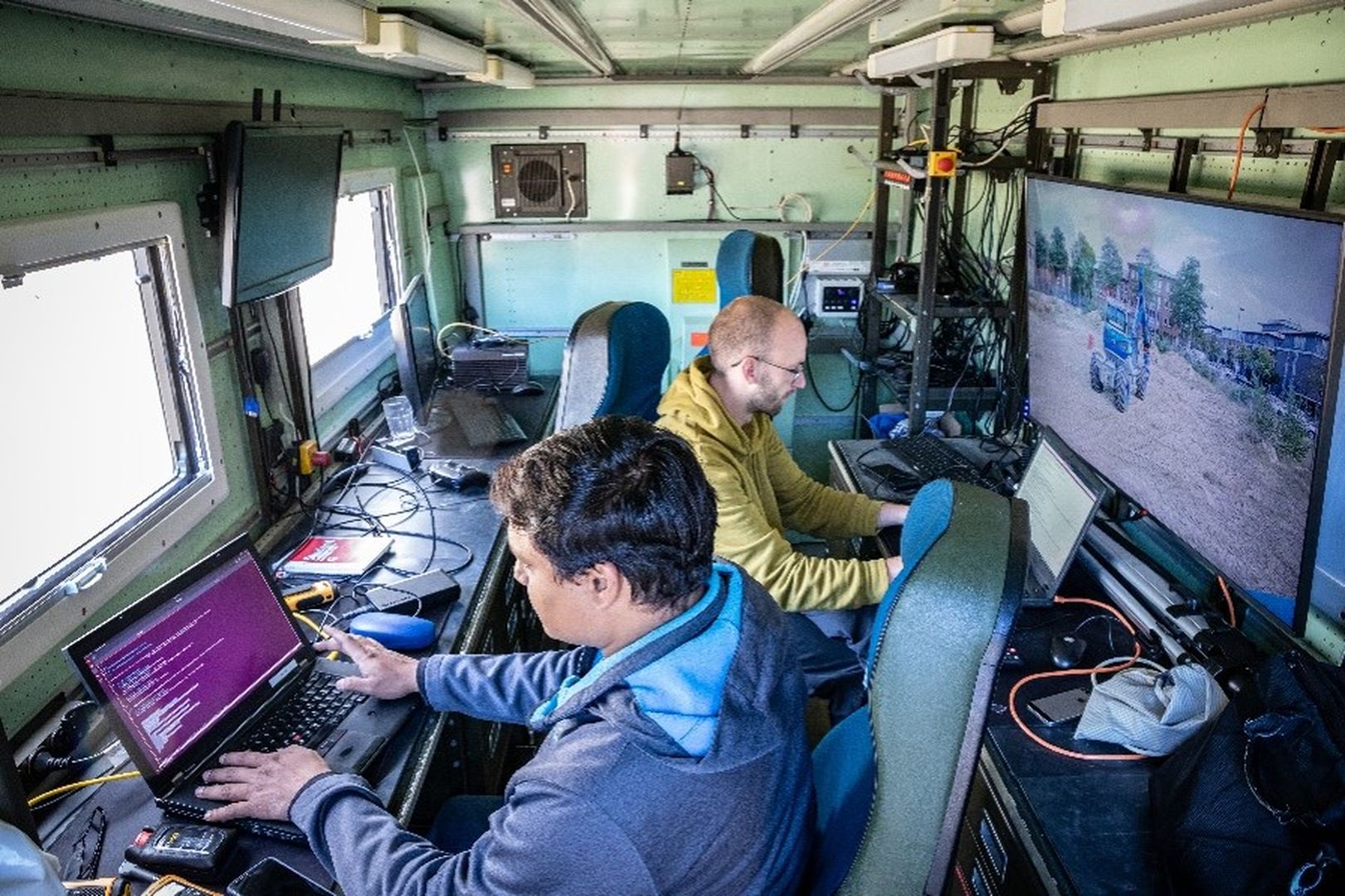ROBDEKON2
Robotic systems for decontamination in hostile environments Phase II

Within the scope of the ROBDEKON competence centre, phase II aims in using robots and humans together in deconstruction or decontamination processes to complement each other in order to simplify the necessary processes or even make them possible in the first place. The first phase of the competence centre has shown that both autonomy functions and close cooperation between humans and robots on site as well as teleoperation scenarios are essential components for efficient processing. The individual components are not to be seen as separate units, but are to be used in mixed forms.
| Duration: | 01.12.2022 till 30.11.2026 |
| Donee: | German Research Center for Artificial Intelligence GmbH |
| Sponsor: | Federal Ministry of Education and Research |
| Grant number: | Funded by the Federal Ministry of Education and Research as part of the Federal Government's "Research for Civil Security" program with the funding number 13N16537. |
| Website: | https://robdekon.de/ |
| Partner: |
Fraunhofer IOSB, Karlsruher Institut für Technologie (KIT), FZI Forschungszentrum Informatik, Götting KG, Kraftanlagen Heidelberg GmbH, ICP Ingenieurgesellschaft Prof. Czurda und Partner mbH, HKA Hochschule Karlsruhe |
| Application Field: |
Agricultural Robotics
SAR- & Security Robotics |
| Related Projects: |
ROBDEKON
Robot systems for decontamination in hostile environments
(06.2018-
06.2022)
|
| Related Robots: |
ARTER
Autonomous Rough Terrain Excavator Robot
|
Project details
In this project, the DFKI is pursuing two core objectives, the sampling of the soil of a landfill on the one hand and the holistic representation of the environment in which the robotic systems move on the other. Building on existing work on sampling the subsoil in landfill scenarios, existing technologies are being expanded, generalised and thus made transferable.
In the first phase, cross-institutional cooperation in the use of robotics and software was successfully demonstrated. The possibility of displaying and operating a large number of different systems on a map, on the other hand, was not part of the first phase as planned, but is a basic requirement if several heterogeneous systems are to carry out tasks simultaneously autonomously and semi-autonomously.
A strong focus of the work is therefore now on the processing and provision of the environment and environmental information for human operators. In a mobile control centre, a kind of situation map is created by merging the recorded mapping sensors of the robotic systems; these common maps are made available to the robots.
In the case of safety-relevant tasks that are dangerous for humans, which a robotic system takes over, it must be possible for humans not only to grasp the overall situation at a glance, but also to take over the control of subtasks and thus contribute their experience and cognitive abilities. This will be realised with the new type of control centre. Human operators can immerse themselves in the situation on site and intuitively operate the systems, regardless of the size or type of robotic system, by using state-of-the-art teleoperation methods and cross-system interfaces. This is where the step from pure teleoperation to telepresence is made.
While the systems are operating, the human can intervene at any time and move from the overview level down to the individual systems.


